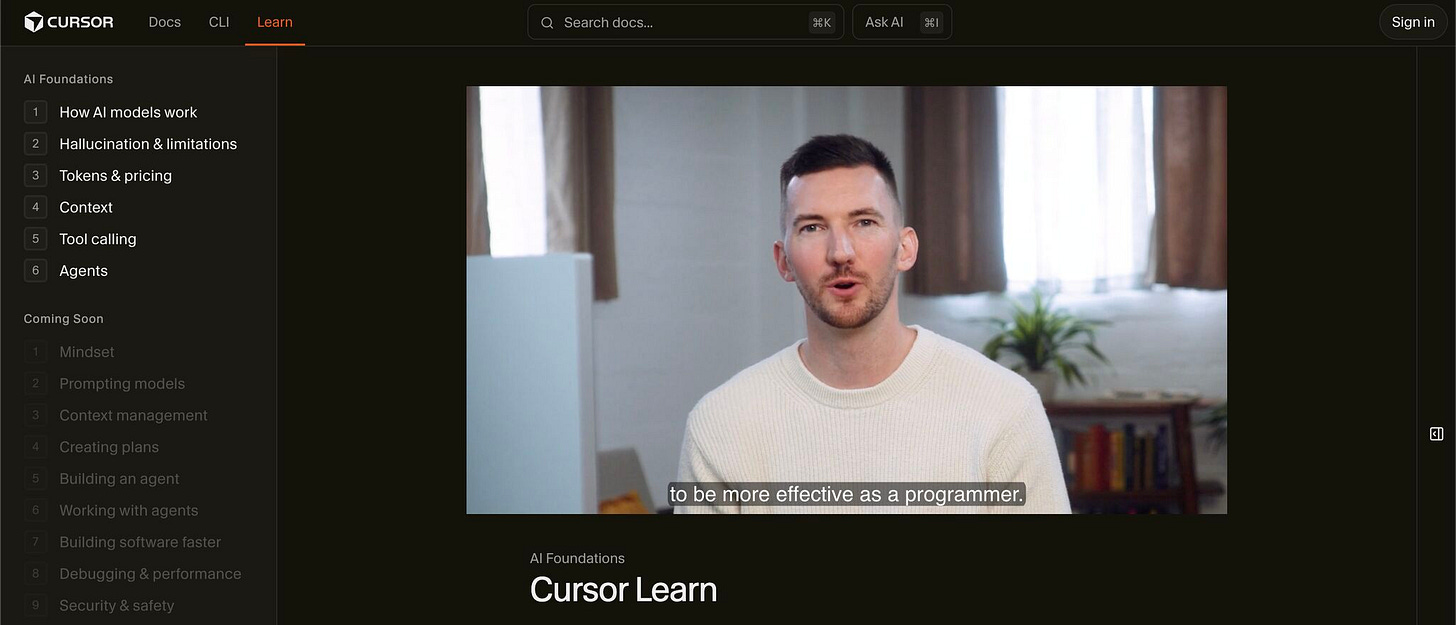How AI Coding Agents Actually Work — A Developer’s Guide from Cursor’s Free 1-Hour Course
Understand how AI tools think, reason, and assist your coding — explained in plain English.
🚀 Introduction: The AI That Codes With You
Developers often wonder — how does AI really understand my code?
Cursor, an AI-powered code editor, recently released a free 1-hour course that demystifies this.
It breaks down how AI models like GPT-4 and Claude actually “think,” process tokens, and execute actions through agents and tools — all in plain English.
Let’s turn those slides into a short, structured walkthrough you can learn from in minutes.
🧠 Step 1 – How AI Models Think
AI models don’t understand — they predict.
When you ask the model a question, it analyzes previous tokens (words or symbols) and predicts the most probable next one.
That’s how it “completes” your thought in code or conversation.
Example:
Input:
def calculate_area(radius):
return
AI Prediction:
return 3.14 * radius ** 2
It’s not magic — it’s pattern recognition based on billions of examples.
⚙️ Step 2 – Context & Tokens
Everything you type consumes tokens — the smaller units of text an AI reads.
If your code or chat is long, it may exceed the context window (the model’s short-term memory).
Tip:
Keep your prompts concise. Remove unnecessary logs or comments before asking complex questions.
⚠️ Step 3 – Hallucinations & Limitations
AI sometimes “hallucinates,” meaning it confidently gives wrong answers.
For example, it might invent a non-existent library or function.
Fix it by grounding AI:
# Instead of this:
Explain how to use xyzlib to connect to MySQL.
# Try this:
Explain how to connect Python to MySQL using standard libraries.
Grounding makes the model rely on real knowledge instead of guessing.
🧰 Step 4 – Tool Calling
Modern AI models don’t just generate text — they use tools.
In Cursor, when AI needs real answers, it calls APIs or runs code to verify outputs.
Example:
# AI calls Python runtime
result = run_in_terminal(”pytest tests/”)
This bridges the gap between conversation and execution.
🤖 Step 5 – Agents in Action
Agents are like mini-AIs working together.
One reads your code, another tests it, and a third may document it.
Real-World Use Case:
In Cursor, agents can:
Detect code smells
Generate docstrings
Auto-fix syntax errors
Refactor large files into reusable modules
That’s how AI helps you code smarter — not by replacing developers but by accelerating flow.
✅ Testing & Production Notes
Before shipping AI-assisted code:
Always run tests locally.
Review logic for edge cases AI might miss.
Don’t copy-paste blindly — understand what the code does.
AI gives you speed; you bring the judgment.
🎯 Conclusion: Future of Coding
AI isn’t replacing developers — it’s upgrading them.
Tools like Cursor mark a shift from “writing every line” to “orchestrating intelligent systems.”
If you’ve ever wondered how AI helps you code, watch Cursor’s 1-hour course here:
👉 https://cursor.com/learn
Keep exploring. Keep building. The future of coding is collaborative.


